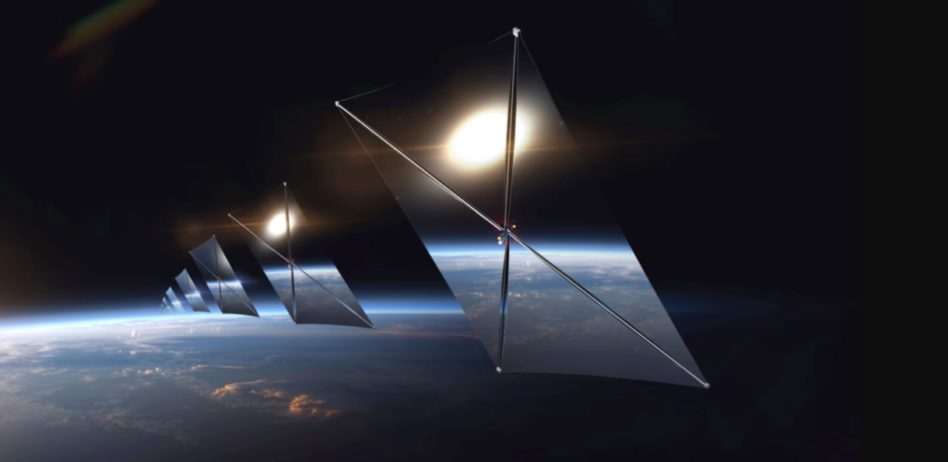
Startups Race to Make Space-Based Power a Reality (Image Credit: Payload)
In the 1940s, science fiction novelist Isaac Asimov proposed the idea of space-based solar power, imagining space stations that could collect solar power and beam the energy to Earth.
Space-based solar power has come a long way since the Asimovian days, with academia and industry demonstrating that transmitting power wirelessly is indeed possible.
Fast forward to 2024, and excitement over the novel tech has spilled into the venture startup domain, becoming one of the year’s most surprising space investment trends. Notable fundings include:
- Star Catcher: $12.25M seed round closed in July
- Aetherflux: Emerged from stealth this year
- Reflect Orbital: $6.5M seed round closed in Sept.
- + Volta Space: Undisclosed seed round in 2022
Despite the enthusiasm, a gap remains between what is technologically possible and what is commercially viable.
Space-based solar power 101: The original concept involves GEO satellites harnessing energy from the sun and transmitting it via microwave signals at 2.45 GHz, similar to the ones used in wireless communications. Dedicated Earth stations can receive microwave signals, which convert them back to electricity. Microwave signals carry energy, but often it is an insignificant amount.
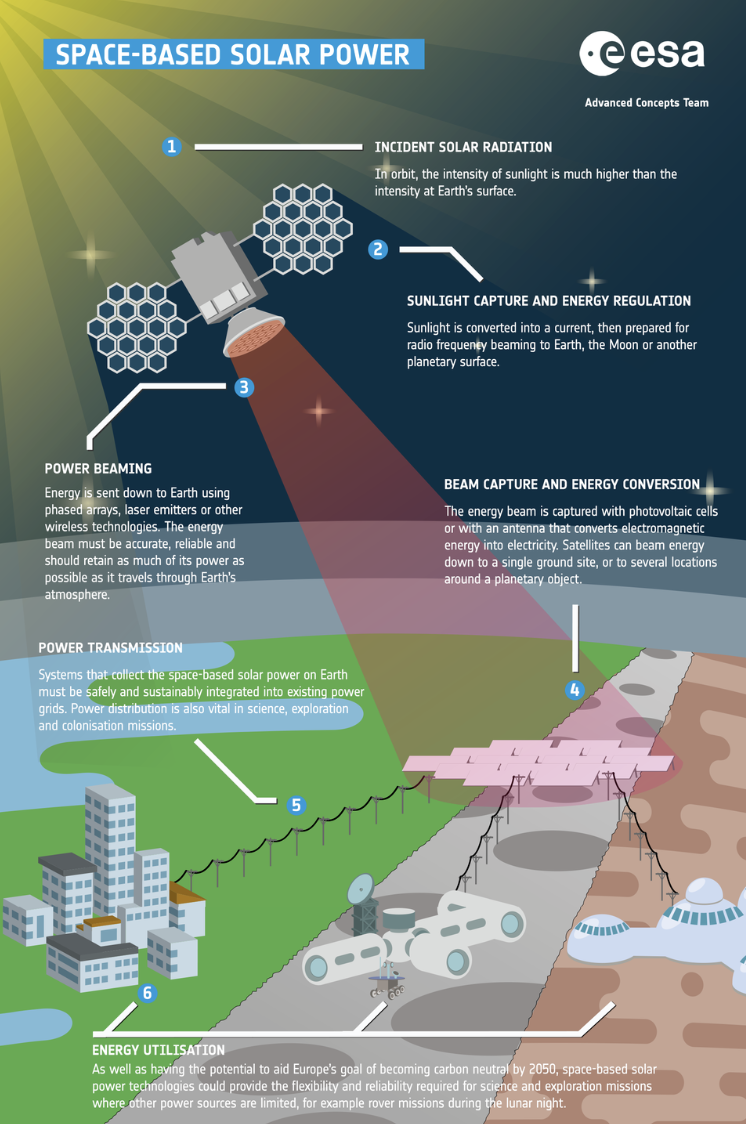
Startups are now expanding on that basic concept, proposing more complex architectures in LEO to increase efficiency.
Companies can generate energy via solar arrays, reflectors, or concentrator arrays.
- Solar arrays – Absorb sunlight energy via photovoltaic panels.
- Reflectors – Direct sunlight to a specific location.
- Concentrator arrays – “Trap”/focus sunlight into a small surface area.
The energy can then be transmitted via microwaves, optical laser links (high concentration of energy), or retransmitting energy that directly focuses sunlight to customers.
In 2013, Caltech received a $100M donation to build a research program around this vision of space-based solar power and has launched LEO demonstrators to begin proving out the technology.
The promise: Proponents view space-based solar power as a promising technology, capable of delivering power to any location on Earth, space, or the Moon. The systems could be particularly effective in remote or hard-to-reach areas where traditional energy infrastructure is lacking or where supplementary energy is needed.
One key advantage over traditional sources is its ability to deliver energy on demand. For example, space-based power can be used in response to a natural disaster or to supply an army unit in a remote part of the world.
Technology Challenge: Despite its potential, skepticism remains about whether space-based systems can deliver meaningful amounts of energy over distances of hundreds of kilometers. Critics also question the efficiency of these systems, as energy losses occur at each stage—generation, storage, and transmission—that often exceed those of traditional energy systems.
In this article, we will review four companies pioneering space-based solar power, and their different approaches.
Aetherflux (Space-to-Earth)
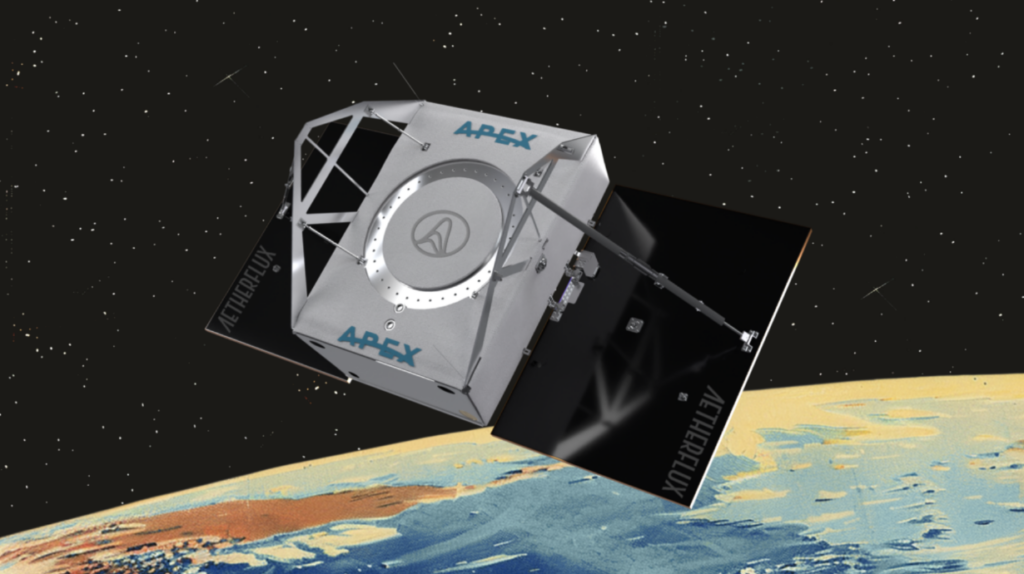
Aetherflux, founded by Robinhood co-founder Baiju Bhatt, is planning a 100-satellite LEO constellation to supply power to remote locations, such as deployed infantry units, maritime, or mining operations.
- The satellites are designed to harvest energy via solar arrays and retransmit the power to Earth using laser links.
- The user terminals will be mobile and have a diameter of five to ten meters.
- A demo mission on an Apex Aires satellite bus is planned for 2025/2026. The satellite will operate at an altitude of 550 km and transmit power for 30 seconds to 1 minute per satellite pass using a 1-kilowatt capacity laser.
Reflect Orbital (Space-to-Earth)
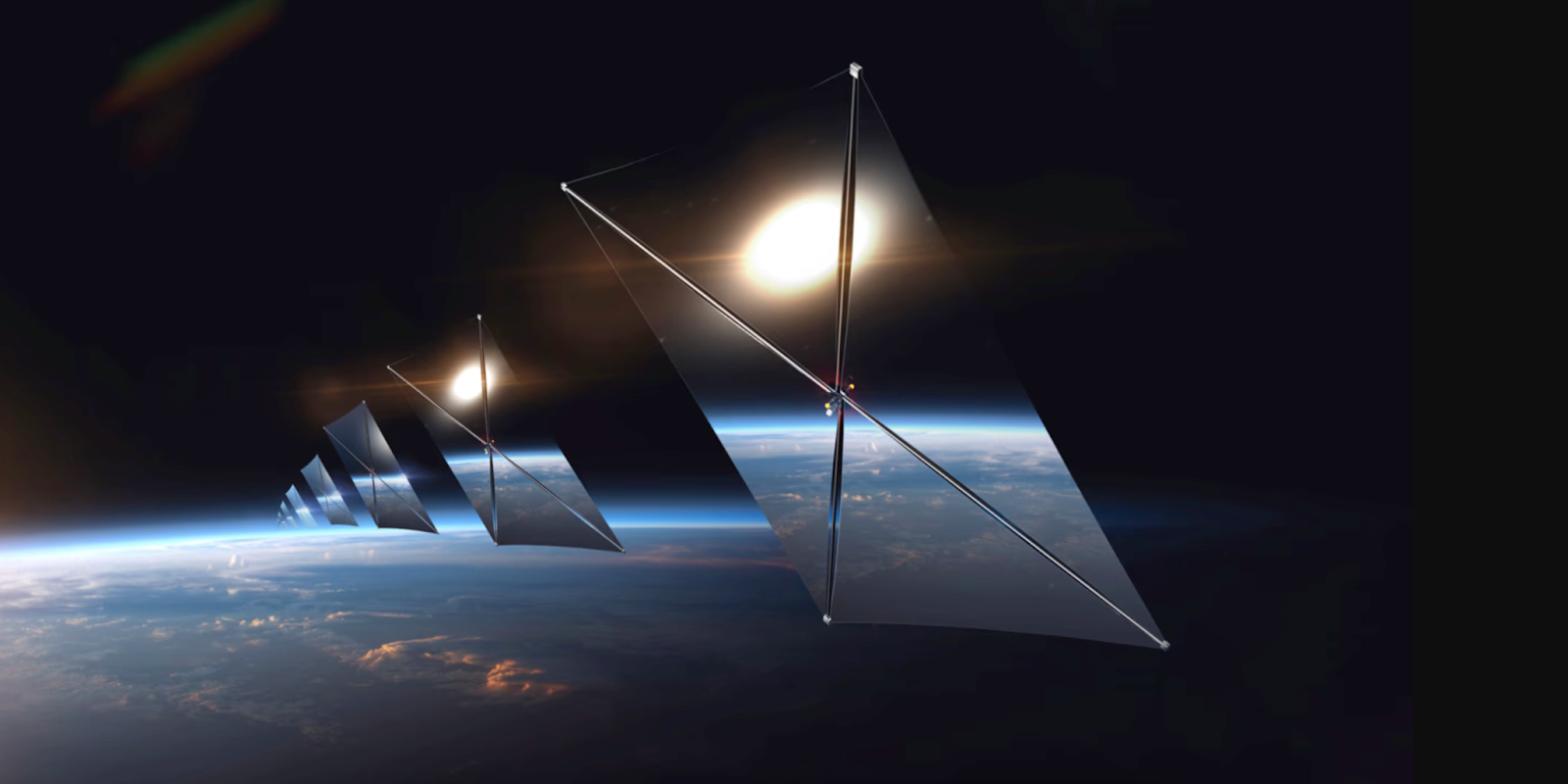
Reflect Orbital is taking a different approach than Aetherflux, using large space-based mirrors to reflect incoming sunlight directly to Earth.
The company’s primary goal is to “sell sunlight after darkness” by directing sunlight to solar farms on Earth after sunset, extending their operational hours.
- This method integrates seamlessly with existing solar farms, eliminating the need for specialized receiver stations and reducing energy losses typically associated with retransmission systems.
- The company has tested its tech on the ground using air balloons.
- A demo satellite is slated to launch in late 2025, Reflect Orbital co-founder Tristan Semmelhack told Payload. It will feature a 10×10 meter reflector.
Star Catcher (Space-to-Space)
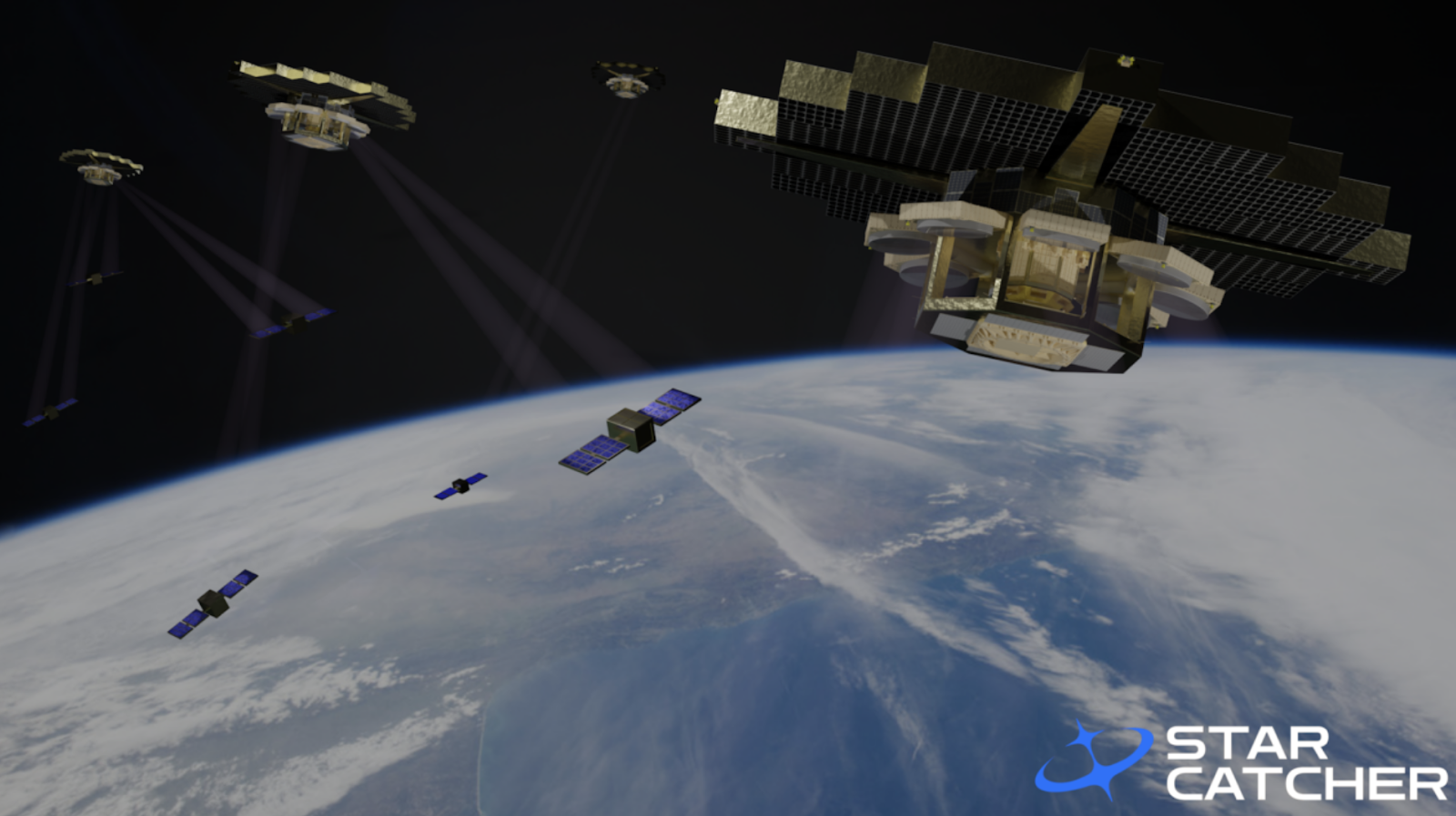
While Aetherflux and Reflect Orbital focus on powering the Earth, Star Catcher has set its sights on using its satellites to power other satellites in LEO. LEO satellites have an insatiable demand for energy but are limited by how much they can generate. Star Catcher hopes to help alleviate this problem.
The proposed constellation of 200 satellites orbiting at 1500 km altitude would be able to reach most LEO customers, offering energy in the range of 100W to 100kW. The system will be compatible with existing satellite solar arrays.
Star Catcher tech: The company’s architecture harvests the Sun’s energy with a concentrator array, drives it through a gain medium (amplifier for light), and then creates emission lines similar to solar arrays. It’s akin to using a large LED flashlight optimized to deliver energy to standard solar panels but at a higher energy density than the Sun. Asimov would be proud.
The company is demonstrating its system on the ground before it moves forward with its in-orbit demo.
The advantages of Star Catcher’s solution include:
- Optimized for traditional solar arrays
- Interoperable with existing infrastructure currently in orbit
- Efficiency because it avoids energy storage and re-transmission
Volta Space (Space-to-Lunar Surface)
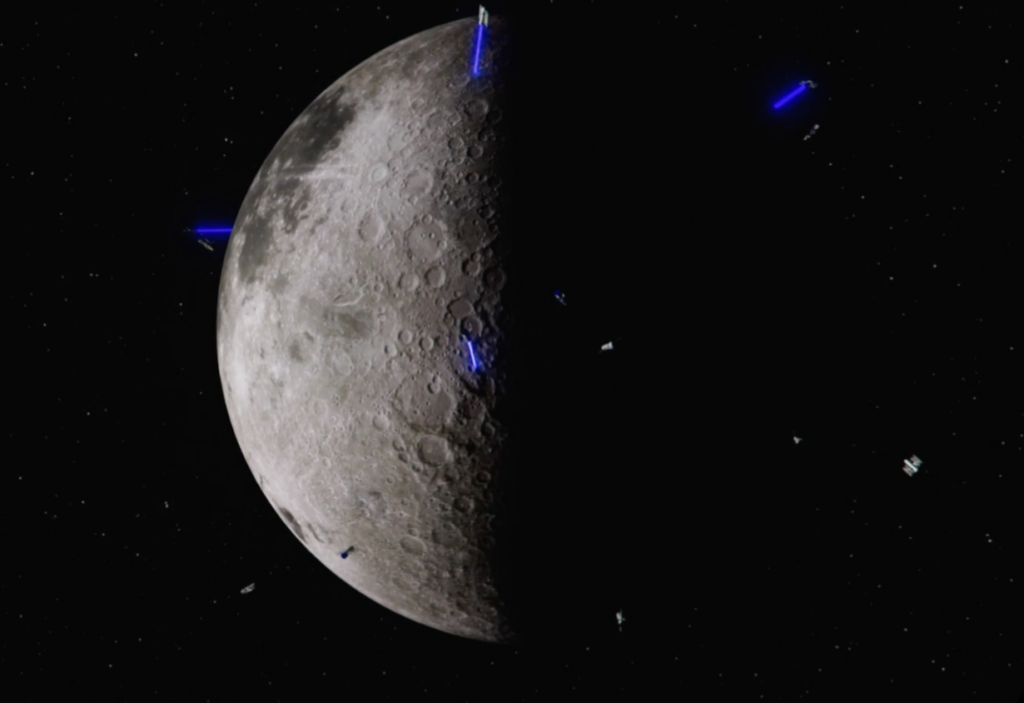
Volta Space is developing a lunar satellite network to help Moon rovers and other assets survive the long lunar night. A lunar day lasts 14 Earth days, followed by 14 days of freezing darkness, making it incredibly difficult for solar-powered hardware to survive.
At an altitude of ~100 km, Volta’s low lunar orbit satellites are designed to collect energy with solar arrays and transmit it to the lunar surface using laser links. The user equipment will consist of photovoltaic panels optimized for laser-link “night panels,” complementing a rover’s regular “day solar panels.”
The company has demonstrated its tech on the ground and aims to launch a LEO mission before heading to lunar orbit in 2028. Volta believes it can keep rovers alive during lunar night with just 1-3 satellites and eventually scale up to enable night operations.
Closing the Business Case
While space-based power systems show promise, they can only succeed if they are commercially viable.
- Service demand: Space-to-Earth and Space-to-Space power services can complement existing power sources by augmenting capabilities or providing mission assurance. Space-to-lunar service aims to provide a new capability to support the continued operation of lunar assets.
- Uncertain technology: Although ground demonstrations have shown that wireless energy transfer is technically possible, questions still remain as to whether meaningful amounts of energy can be transmitted over distances of hundreds of kilometers.
- Cost of service: Setting up terrestrial energy infrastructure, especially in remote areas, is a notoriously high-cost endeavor, which could make space-based systems an attractive alternative. Nonetheless, the cost of building satellites is high, and it remains to be seen whether the technology will develop into an ROI-positive venture.
- Regulation considerations: Like many emerging technologies, space-based solar power lacks a well-defined regulatory framework. Companies will need to collaborate with regulators to ensure the safe operation of their systems (laser transmission comes with risks) and to prevent regulatory delays from hindering their development plans.








